Kaspersky Total Security regularly scans your device for malware and infected files. You can run different types of scans, which vary depending on their duration and scope.
- Full Scan. The entire computer is scanned. This takes considerable time.
- Quick Scan. Scans startup objects, system memory, and the hard drive boot sectors. Does not require much time.
- Selective Scan. A scan of a specified file or folder.
- External Devices Scan. Scans the removable objects connected to your computer.
After you install Kaspersky Total Security, we recommend that you run a full scan of your computer.
How to run a full or quick scan
Before starting a full scan, we recommend that you close other running applications. How to start a scan:
- In the main window of Kaspersky Total Security, click Scan.
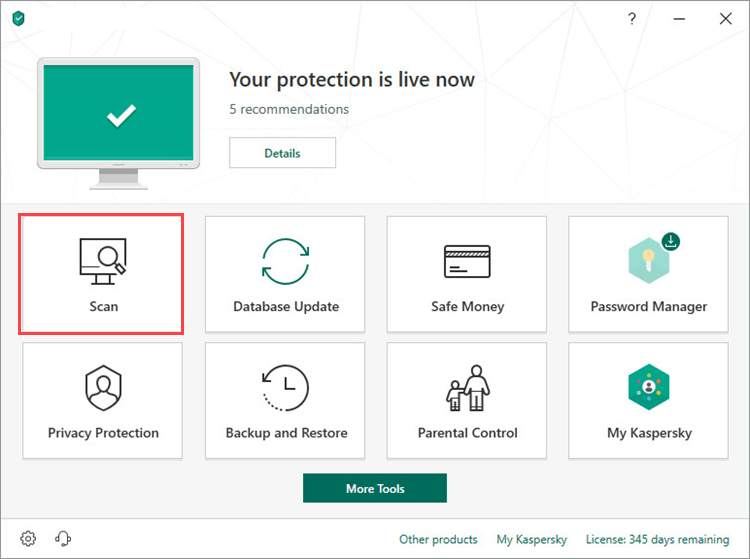
- To learn how to open the main application window, see this article.
- Select Full Scan or Quick Scan.
- Click Run scan.
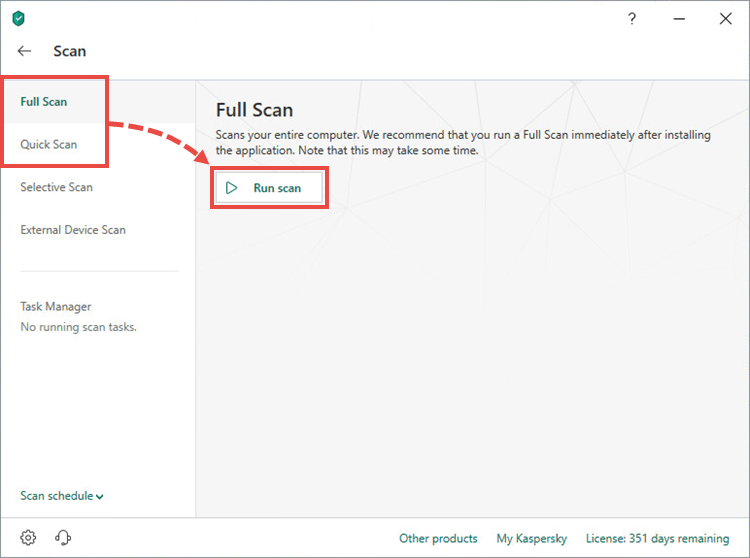
- For a full scan, select an action to be performed upon completion:
- Keep the computer turned on
- Shut down the computer
- Switch the computer to sleep mode
- Switch the computer to hibernation mode
- Reboot the computer
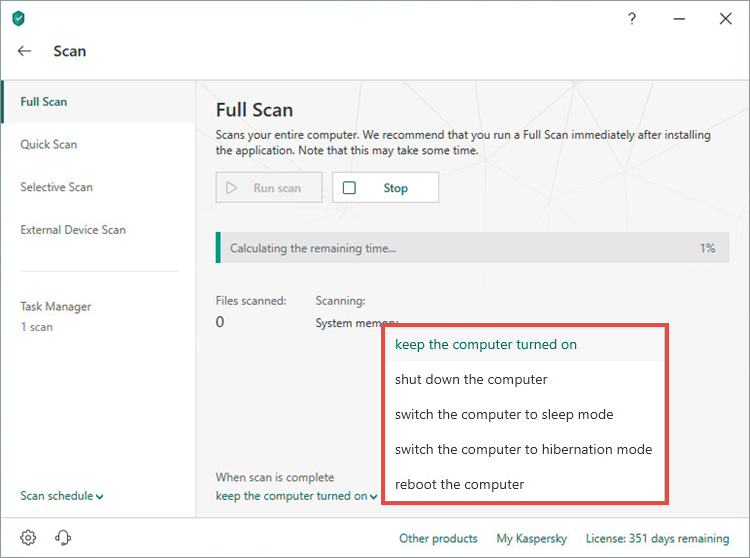
The scan task will start. By default, an action recommended by Kaspersky Lab specialists will be performed when a threat is detected.
How to scan individual files or folders
- In the main window of Kaspersky Total Security, click Scan.

- To learn how to open the main application window, see this article.
- Click Selective Scan.
- Click Add and select files or folders to scan. You can also drag-and-drop the files into the scan area.
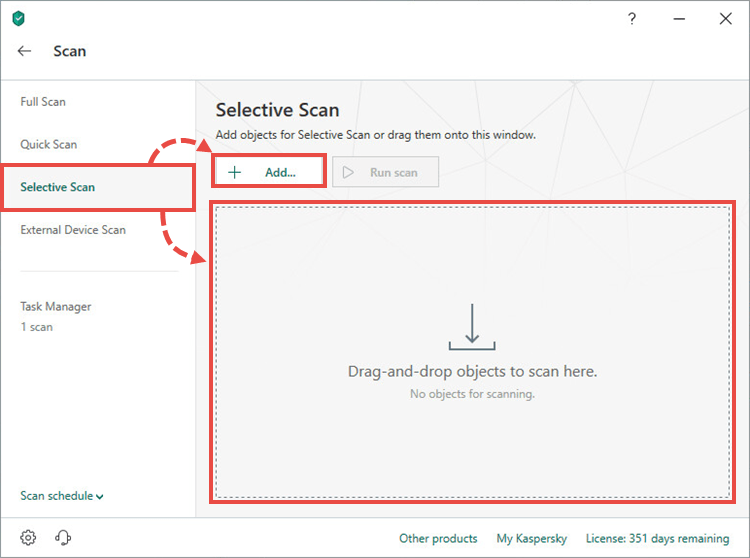
- Click Run scan.
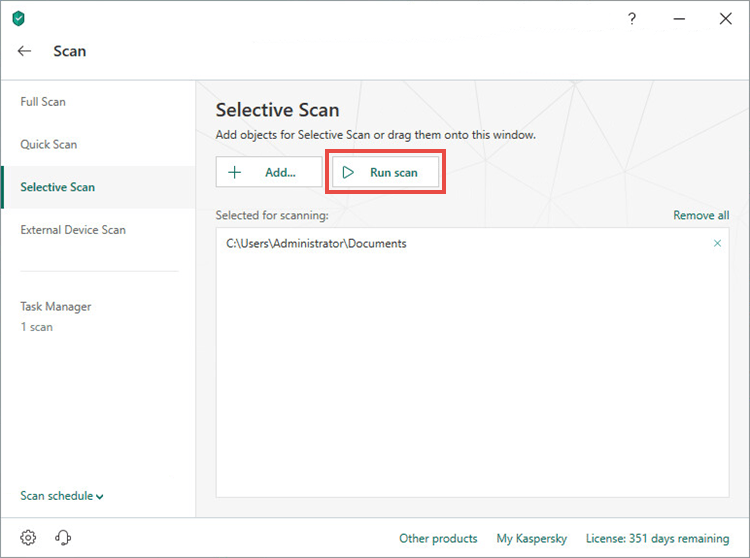
The scan task will start. By default, an action recommended by Kaspersky Lab specialists will be performed when a threat is detected.
How to run External Device Scan
Normally, when you connect a removable drive, the notification Removable drive detected appears in the bottom right corner of the screen. To run a scan task, click Scan.
To run an External Device Scan from the application interface:
- In the main window of Kaspersky Total Security, click Scan.

- To learn how to open the main application window, see this article.
- Click External Device Scan.
- Select an external device and click Run scan.

The scan task will start. By default, an action recommended by Kaspersky Lab specialists will be performed when a threat is detected.
How to set a scan schedule
- In the main window of Kaspersky Total Security, click Scan.

- To learn how to open the main application window, see this article.
- Click Scan schedule in the lower-left corner and select the scan type:

- Select the time to run the scan.
- Click Save.
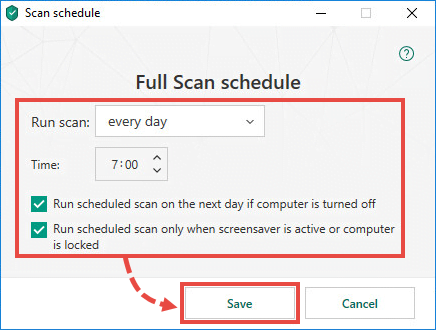
The scan will be run according to the settings you have chosen.
How to run a scan remotely
You can send commands to your device from any device connected to the Internet. A remote scan is run on My Kaspersky. See this article for instructions.
How to view scan results
- In the main window of Kaspersky Total Security, click Scan.

- To learn how to open the main application window, see this article.
- Click Task Manager.
- Click Detailed report under the scan.

- Select the task and click Details in the lower-left corner.
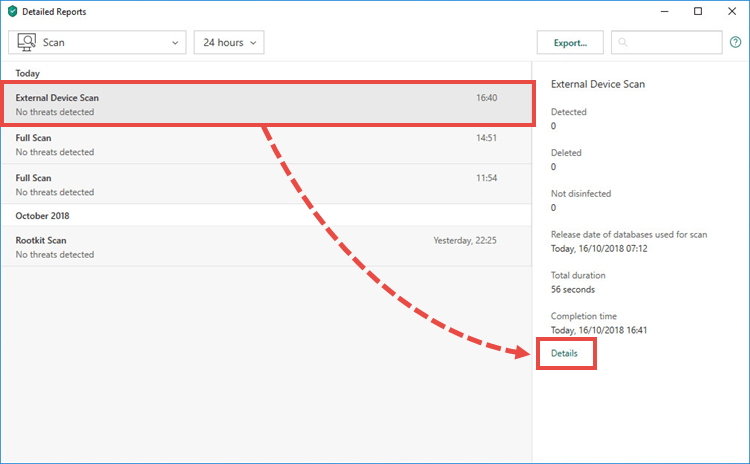
The information about the scan will be displayed.
How to stop a scan task
- In the main window of Kaspersky Total Security, click Scan.

- To learn how to open the main application window, see this article.
- Click Task Manager.
- Click Stop.
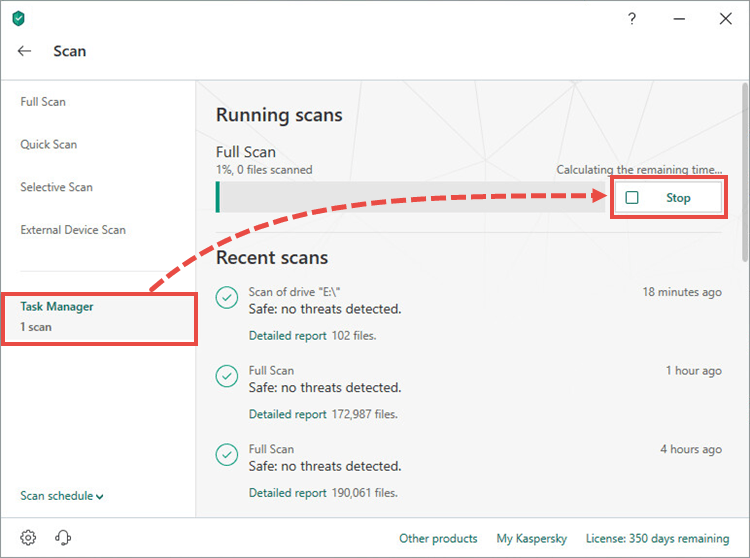
The scan will be stopped.
What to do in case of scan issues
If an error occurs during scan, look for a solution to the problem in this article.
If the issue persists, submit a request to Kaspersky Lab technical support via the My Kaspersky portal. Please include a detailed description of the issue.
For information on how to use My Kaspersky, see the Online Help page.
Source : Official Kaspersky Brand
Editor by : BEST Antivirus KBS Team

